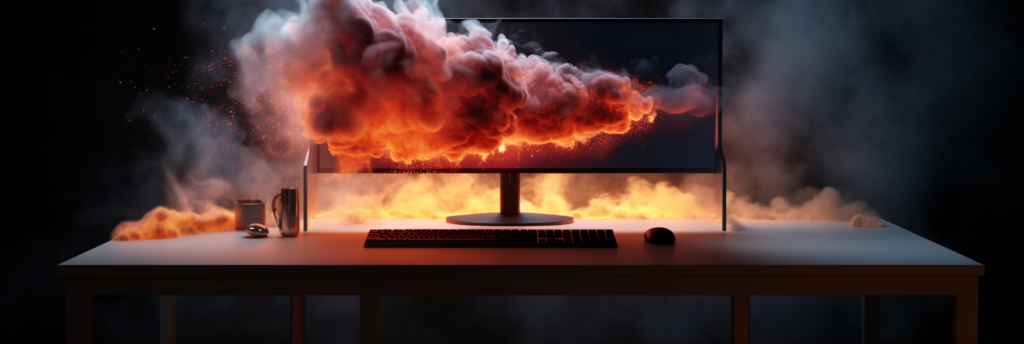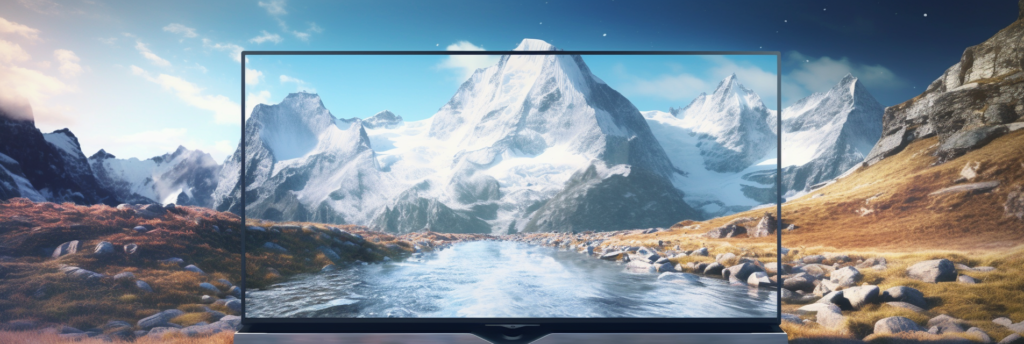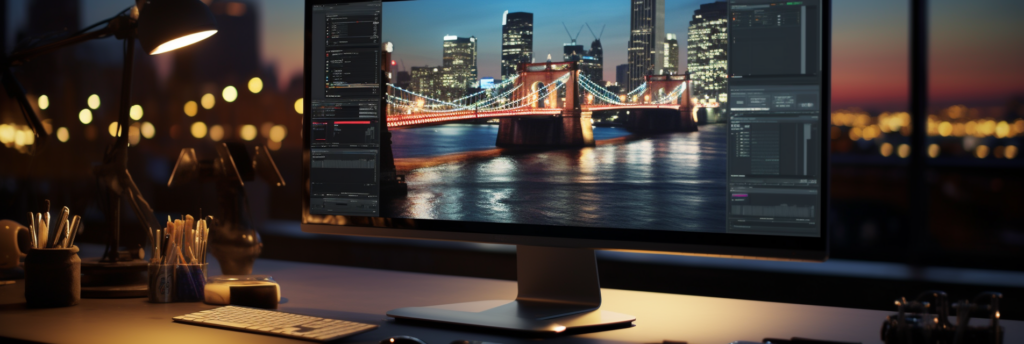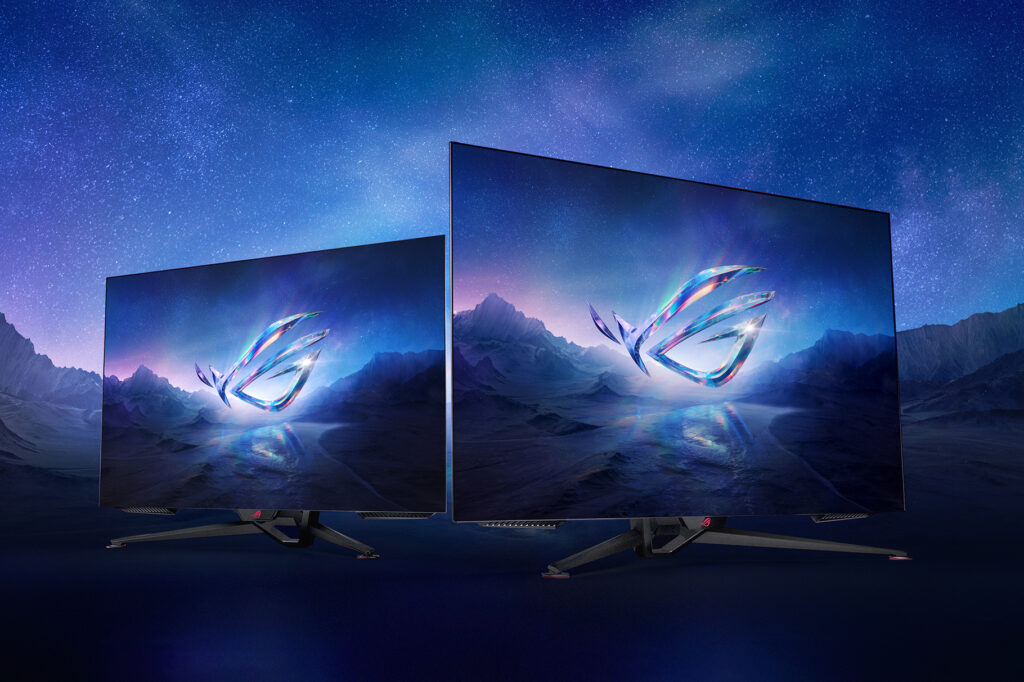What is OLED Burn-In and How to Prevent It – Easy 5 Minutes

We here are WiredColony love our 42in OLEDs. The picture quality and the responsiveness for gaming is unparalleled. If you are thinking about purchasing an OLED PC monitor, there is a topic you need to familiarize yourself with: burn-in. Yes, that dreaded phenomenon where your screen gets permanently stained by a static image that won’t go away. But don’t worry, we are here to tell you that burn-in is not as bad as you think, and there are ways to prevent it and enjoy your OLED screen for a long time.
Table of Contents
What is OLED Burn-In?
First of all, let me explain what burn-in is and why it happens. OLED stands for organic light-emitting diode, which means that each pixel on your screen can emit its own light and turn on and off independently. This gives OLED screens amazing contrast, color accuracy and viewing angles. However, it also means that each pixel can degrade over time, especially if it’s constantly emitting bright light. This can cause some pixels to lose their brightness or change their color faster than others, resulting in a faint ghost image of something that was displayed on the screen for a long time.
For example, if you watch a lot of news channels or sports games, you might notice that the logo or the score bar at the corner of your screen becomes slightly visible even when you switch to something else. This is called image retention, and it’s usually temporary and goes away after a few minutes or hours. But if you keep displaying the same image at high brightness for hours or days, then you might end up with burn-in, which is permanent and irreversible.
OLED Monitors Defend Against Burn-In
Now, before you panic and throw away your OLED monitor or phone, let me tell you that burn-in is very rare and unlikely to happen with normal use. OLED technology has improved a lot over the years, and manufacturers have implemented various features to reduce the risk of burn-in. For example, most OLED TVs and monitors have a pixel refresher function that runs automatically when the screen is turned off or in standby mode. This function cycles through different colors and patterns to even out the wear and tear of the pixels and restore their uniformity. Some OLED screens also have a logo luminance adjustment feature that detects static logos on the screen and lowers their brightness to prevent burn-in.

Proactively Prevent OLED Burn-in Protection Tips
There are also some simple steps that you can take to avoid burn-in and prolong the lifespan of your OLED screen. Here are some tips that I follow:
- Keep your brightness level low or moderate. High brightness levels can accelerate the degradation of the pixels and increase the chance of burn-in. You don’t need to crank up the brightness to enjoy your OLED screen anyway, since it has excellent contrast and can produce deep blacks even at low brightness. You can turn this up when you are gaming.
- Change your content frequently. Don’t leave your screen on the same channel or app for too long. Switch to something else every once in a while, to give your pixels a break and prevent them from getting stuck on one image.
- Turn off your screen when not in use. Don’t let your screen stay on when you’re not watching or using it. This will save energy and reduce the wear and tear of your pixels.
- Use a black wallpaper or screensaver. If you have an OLED phone or laptop, you can use a black wallpaper or screensaver to protect your screen from burn-in. Since OLED pixels can turn off completely when displaying black, this will reduce their degradation and power consumption.
- Avoid displaying static content at full brightness at all times. This is a tradeoff between a great picture and screen protection. If you want an OLED quality picture, you have to pay the screen protection piper.
- Hide your desktop taskbars. For Windows users you can uses RoundTB & Lively Wallpaper to achieve this. We will be creating a step by step tutorial on how to set this up for Windows machines. So stay tuned by subscribing to our newsletter.
- Don’t have any desktop icons. Create a folder where you can stuff all your desktop icons. The pin that folder to your taskbar. Whenever you need to access it, just hit your WinKey to trigger the task bar and click on the folder.
What is Automatic Backlight Limiter and why is it good?
Automatic Backlight Limiter (ABL) is a feature that automatically adjusts the brightness of your screen depending on the content you are watching. It sounds boring, right? But trust me, it’s actually a very good thing for your eyes and your wallet. Let me explain.
Imagine you are watching a movie with a lot of dark scenes, like a horror film or a thriller. If your screen is too bright, you will not be able to see the details in the shadows, and you will also strain your eyes trying to adjust to the contrast. Not to mention, you will waste a lot of energy and money by keeping your screen at full brightness all the time.
That’s where ABL comes in. It detects the average brightness of the content you are watching and lowers the backlight accordingly. This way, you can enjoy a more realistic and comfortable viewing experience, while also saving energy and reducing your electricity bill. Pretty smart, huh?
There is also a “downside” to ABL. It may dim your screen when using your desktop for work and web browsing. I personally don’t feel it is a bad thing. Not only is it extending the life of my OLED monitor, but it is also extending my precious eyeballs as well. Learning to live with a dimming screen isn’t so bad.
You really can get used to it and actually appreciate it. It is a change in mindset if you ask me. Max luminescence is NOT always better, especially for your monitors and your eyes. Also, if needed, you can un-dim your screen by right-clicking on anything on your desktop (at least I can with my PG42UQs). I should note, I haven’t experienced any dimming during gaming whatsoever, with my 3 ASUS OLED PG42UQs.

Don’t Live in Fear of OLED Burn-In
While burn-in is definitely a concern, most of us will never experience it with our OLED monitors. Especially, those who are proactive about preventing it. Changing your workflows and habits will drastically reduce the occurrence of burn-in. Also, changing your mindset on how a good monitor functions will help you to appreciate them. My advice, love the ABL and it will love you back in the future.
Join our newsletter to receive our guide on how to setup Windows 10/11 for OLED use and other related content! 😊
Conclusion
I hope this article has helped you understand what burn-in is and how to prevent it. I know some people are afraid of buying OLED screens because of burn-in, but I think they’re missing out on the best picture quality available today. I love my OLED TVs, monitors and phone, and I don’t regret buying them at all. I just follow these simple tips and enjoy my OLED screens without any worries.
Do you have any questions or comments about burn-in? Let me know in the comment section below. And don’t forget to subscribe above for more OLED tips and tricks. Thanks for reading!
Read More: LG OLED TV C2/C3 vs ASUS OLED PG42UQ for Gaming Review
Register for an ALWAYS free WiredColony account. Sign up for a WiredColony account






Responses